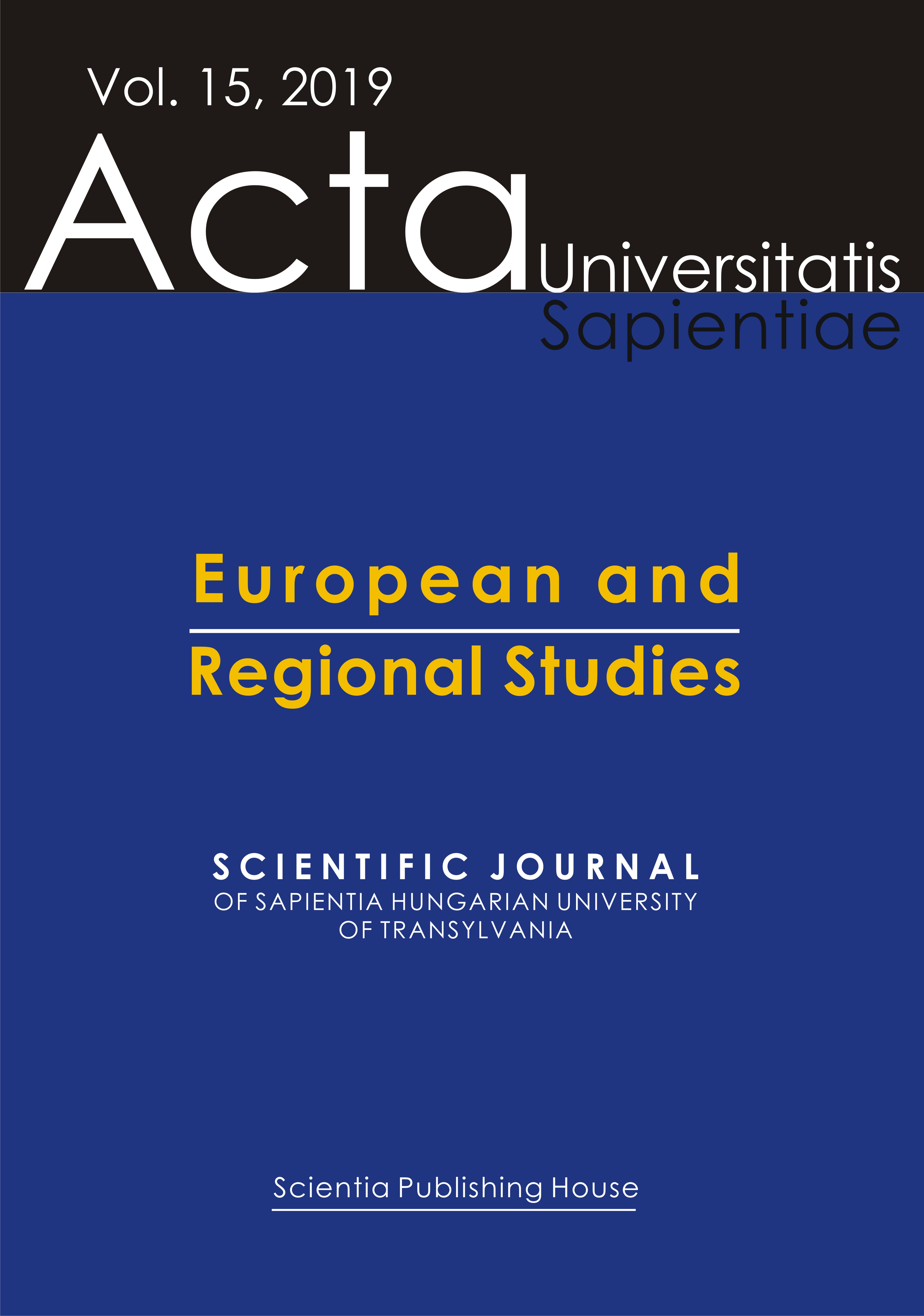
We kindly inform you that, as long as the subject affiliation of our 300.000+ articles is in progress, you might get unsufficient or no results on your third level or second level search. In this case, please broaden your search criteria.


The study deals with the impact of the coronavirus in 16 districts of southern Slovakia. The first part of the paper outlines the impact of the pandemic on the Slovak economy. In the beginning, attempts were made to slow the spread of the epidemic by limiting contacts between people. This had a significant negative impact on supply chains and affected all countries in the developed world. The measures have had the most negative impact on services. Economic performance declined, unemployment and later inflation increased. This was also felt in southern Slovakia. The area is an integral part of the country, with many of the largest companies located in the region analysed. Despite this, the 16 districts of southern Slovakia are collectively lagging behind the national average. It is true that there are significant regional disparities, but the development gap between West and East is significant. Taking unemployment, industry salaries and business productivity into account, it can be said that southern Slovakia is still one of the most backward regions in Slovakia. In view of the lower level of development, it is difficult to determine to what extent this is due to the economic crisis caused by the coronavirus, but it can be stated that the current situation makes it difficult for southern Slovakia to catch up.
More...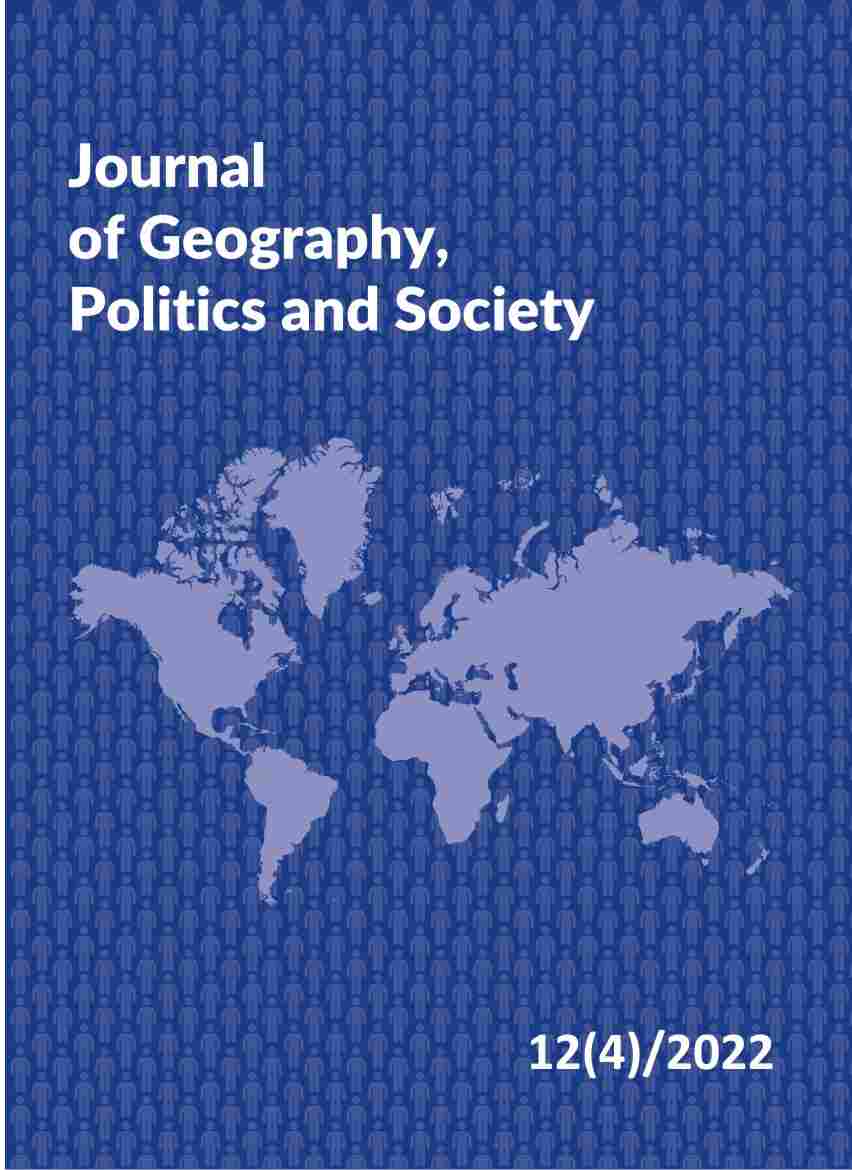
In the 17th century, the Champa Kingdom, which had operated for more than 1,000 years in what is now central and southern Vietnam, ceased to exist. The Hindu influence of the Cham state remained visible in the brick tower-temples that still exist, as well as in sculptures some of which are in Vietnamese museums. The first research into the Cham culture and history was carried out by French colonisers in the early 20th century, followed by Polish archaeologists and the Vietnamese government, among others. The study of the legacy left by the Cham poses significant difficulties, due to years of warfare, environmental influences, the passage of time and theft. However, the homogeneous culture and architectural structural integrity enable conducting a research analysis of the legacy left behind. The heterogeneous level of tourist development of the different tower groups poses a challenge to create a high standard of tourist attractiveness. The high quality of tourism provision characteristic of My Son and Po Nagar, setting an example to be followed throughout the Southeast Asian region, stands out against the low level of tourism development at other Cham temples.
More...
The relationship between the city and its vicinity has been undergoing a fundamental change, calling many old approaches into question, and challenging local societies and decision-makers. The regions of East-Central Europe have several specificities that render it difficult to adopt traditional western approaches and procedures. This article attempts to interpret peri-urban developments by incorporating local features and transcending the dichotomy of town and countryside.
More...
The latest volume of the Historical Geography of Árpád-period Hungary series (a two-volume publication including a monograph and a map supplement) is about the formation and historical geography of the former Sáros (Slovak: Šariš) county.
More...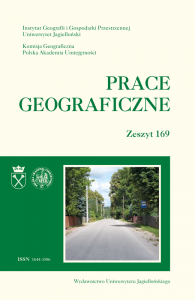
The article tackles the issue of the identification of relics and type of transformations in the rural cultural landscape of Warmia and Masuria, which took place as a result of the depopulation of localities due to the course and consequences of World War II. The incorporation of the southern part of East Prussia into Poland in 1945 initiated a number of social, economic, and cultural changes. Above all, the region was affected by huge migratory movements. These started with the hurried escape of the local civilian population fleeing from the Red Army that conquered the area in the winter of 1944–1945. Subsequently, the displacement of the German people and the unstable political situation that made it difficult to maintain habitation contributed to the depopulation of hundreds of villages, manor houses, foresters’ lodges, and small settlements. Today, in Poland’s incorporated part of former East Prussia, there are about 788 abandoned localities. The extent to which the rural landscape has changed as a result of the total depopulation of hundreds of settlement units has not yet been determined. The purpose of the research was to diagnose the processes that occurred in the material structure of the landscape of Warmia and Masuria after the continuity of habitation had been interrupted, based on data collected due to on-site prospections, searches, and spatial analyses. The elaboration presents possibilities for identifying transformations that occur after depopulation on the basis of the results of multifaceted spatial analyses carried out with the use of GIS tools. Particularly noteworthy is the use of detailed elevation data obtained from airborne laser scanning, which data largely condition not only identification of surface relics but also the degree of degradation of rural structures. The issues concerning the diagnosis of transformations are discussed using, as an example, the study of one of the depopulated localities – Bartki – a former settlement that lies in Olecko County (Warmia-Masuria Province).
More...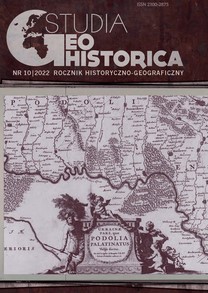
This article evaluates the reliability of a part of the Geograficzno-statystyczne opisanie parafiów Królestwa Polskiego (Geographical-Statistical Description of the Parishes of the Kingdom of Poland, called Parish Sketches) on the example of the settlement network of the then Gostynin County (Greater Poland Province). The area under examination was made up of three deaneries with 23 parishes. Settlement network data were collected from the selected verification maps, and then a common database with all the acquired information was developed. The analysed Parish Sketches were compared with the special map of the Poznań Province and other cartographic materials in terms of their content. The resulting quantitative and qualitative analyses made it possible to assess the correctness of the Parish Sketches as a source document for developing a special map.
More...
This article presents the relationship between two monumental series developed at the Institute of History of the Polish Academy of Sciences – the Historical Atlas of Poland and the Historical-Geographical Dictionary of the Polish Lands in the Middle Ages. From this perspective, the author presents the idea of their development, conceptual assumptions and the history of institutional relations. A separate part is devoted to analysing the use of the Atlas in the compilation of the Diction
More...
The article presents the creation of a regional historical GIS database derived from two eighteenth century maps of the Principality of Transylvania, an eastern province of the Habsburg Empire at the time. The research was focused on an area in the southern part of the principality marked by the presence of the Transylvanian Saxons, the ethnic German descendants of the colonists invited to settle here by the kings of Hungary during the High Middle Ages. The extracted features were assembled in four vector layers (two point layers and two line layers) and were subsequently published online on a free data repository (Harvard Dataverse).
More...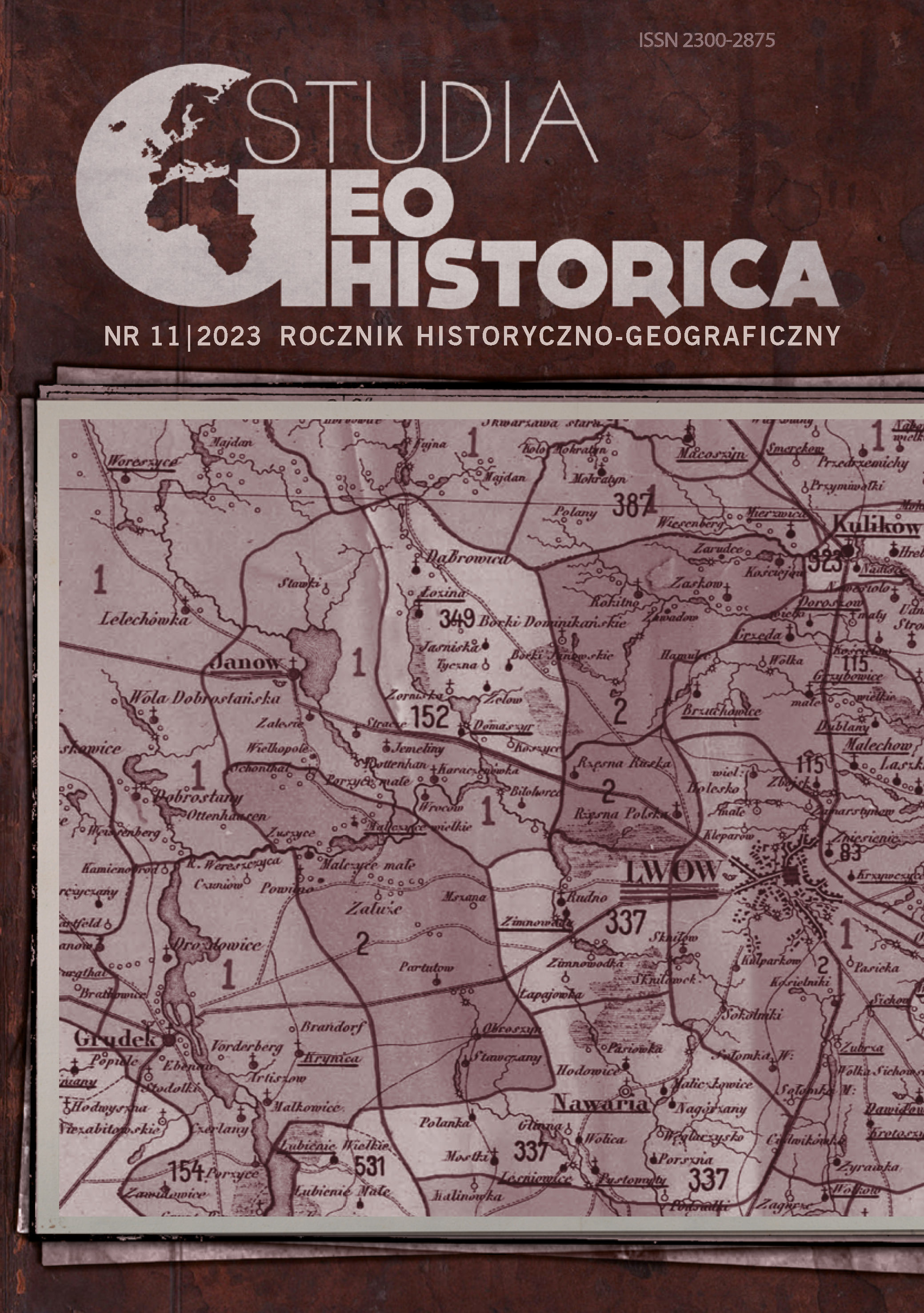
The article focuses primarily on the 1:2,500 Lindleys’ map (1897–1901), one of the results of the cartographic work undertaken in connection with the development of the Warsaw sewage and waterways system. The map served as a basis for the edition of urban plots presented in the source. The obtained spatial data enabled comparing the stability of urban plot borders established at the turn of the twentieth century against current geodetic data.
More...
Book review: Piotr Oliński: Pogoda i klimat regionów południowobałtyckich od końca XIV do początków XVI w. w źródłach narracyjnych, Wydawnictwo Naukowe Uniwersytetu Mikołaja Kopernika, Toruń 2022, pp. 299, 3 maps
More...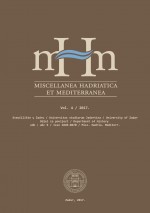
Dugi otok is the only large inhabited Adriatic island with a name composed of two words, with a Croatian name and with a noun island (Croat. otok) in it. Almost all of the linguists and historians agree that the island was first mentioned by Constantine the Porphyrogenitus (10th cent.) as Pizych, which can nowadays be recognised in place names Čuh and Čuh Polje on Dugi otok near Proversa. By the disappearance of that settlement the name was forgotten, but none of the names of newly founded settlements did not become the nesonym, as frequently occurred elsewhere in Croatian nesonymy. In the archival documents and historical maps the island is usually identified by the Romance compound word: geographical term insula/isola + determinant Magna, Maiori, Grossa, Grande, Longa. The island was named Dugi only in the latter half of the 19th century. Neither the nesonym Dugi otok, the ethnic Dugootočanin nor the ktetic dugootočki are used outside the official usage.
More...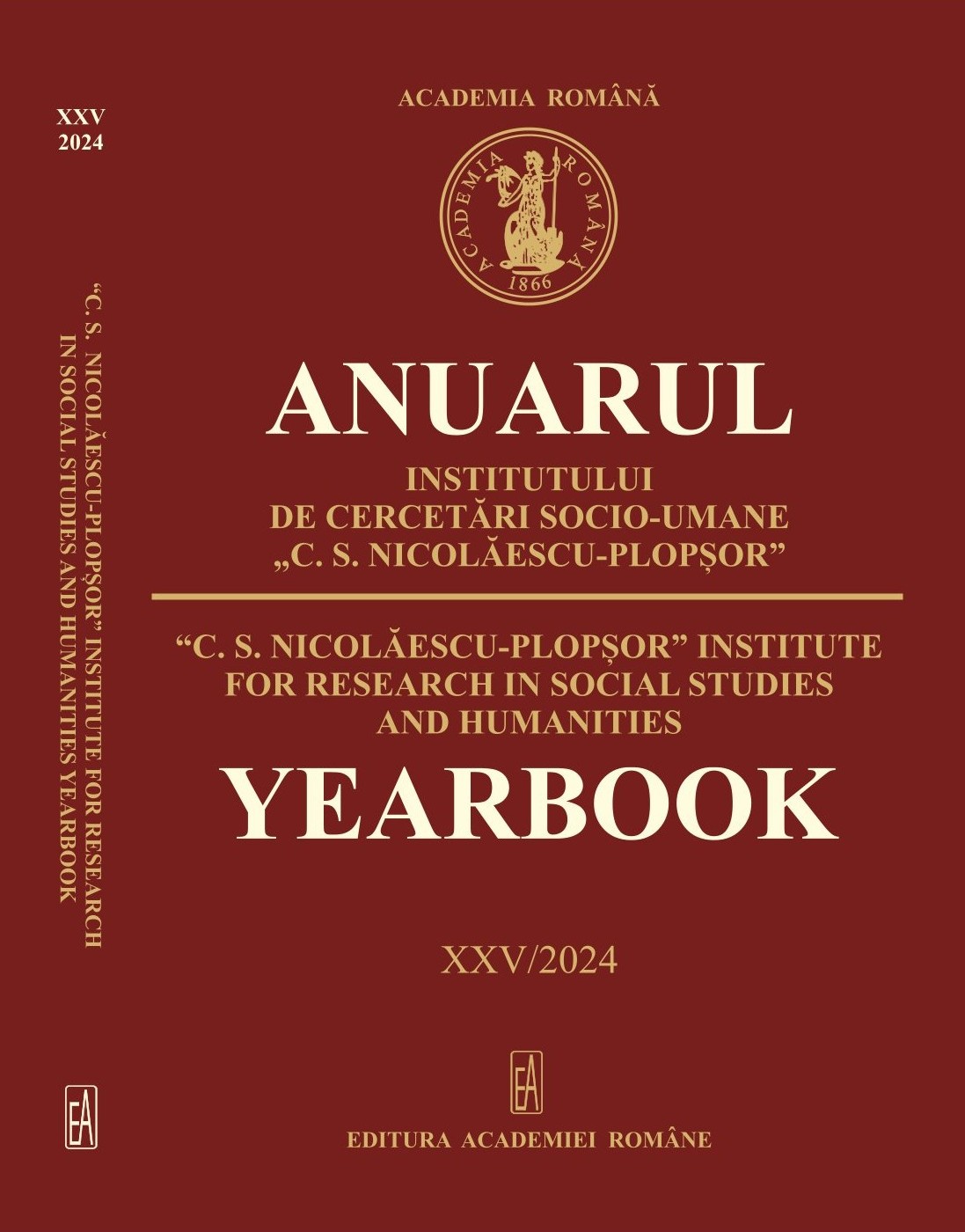
The peculiarities of the natural setting, together with the social-historical conditions inherent in the territory between the Carpathians and the Danube, played an important role in the process of appearance and evolution of the human settlements in this geographical area.Human settlements can be found most often on the rivers, near the sources of drinking water, especially on the lower or middle terraces, where there were favorable conditions for cereal cultivation. They provided drinking water and an important source of food, fish, but also a great communication opportunity. Neolithic settlements have been identified in river beds, in flood-free areas, on the edges of terraces, on low terraces, on the Danube islands, on the edge of lakes, in caves or in shelters under the rock.The archaeological documentation allows us to observe in the Bronze Age and the Iron Age that, in parallel with the existence of a “scattered” habitat, similar to the communities that used grazing to make a living, there are also some reinforced settlements which, with the proliferation of customs, shows the existence of leaders who were interested in affirming and maintaining social prestige.
More...
From the foregoing, it can be seen that the slopes of the Šar Mountains were well inhabited in the Middle Ages, especially those facing Prizren. This is especially true of Sredac district and Gora. The population here was engaged in agriculture, but also in animal husbandry, for which there were good natural conditions. The Monastery of the Holy Archangels (Manastir Svetih Arhanđela) near Prizren was the largest feudal lord in this territory, having about fifteen rural settlements and around ten mountains, with the exclusive right to use it. In addition to the Monastery of the Holy Archangels, the Prizren episcopate (Prizrenska episkopija), Hilandar, and the Monastery of the Holy Virgin of Htetovo (Bogorodica Htetovska) also had their estates in the Šar-mountain area. Other monasteries and churches here did not receive estates, or they received individual villages as was the case with Dečani in 1397. Therefore, the Serbian church was the largest landowner in the Šar-mountain area, and church estates were the basic factor of economic development of this area. The plateaus and slopes of the Šar Mountains abounded in rich and high-quality grazing, so it is not surprising that a large number of the mountains are mentioned in the charters. They served as summer pastures for monastic and village cattle, as well as for the cattle of secular feudal lords. Polog and Prizren district, with their mild climate, compared to that of Šar-Mountain, formed a natural reserve for keeping cattle in wintering grounds (zabeli) so that in the spring it would rise to the Šarplanin mountains, that abounded in quality grass for grazing until late autumn. Therefore, Šar-Mountain had its economic significance and role in the development of the Serbian medieval economy.
More...
The paper deals with Strabo’s account of Corinth, one of the most interesting places in the Greek world, and the Roman as well. Strategically situated on the isthmus which bears its name and connects the Greek mainland to the Peloponnese, Corinth was a city with a rich and turbulent history, but also a centre of trade and economic prosperity, which is why it attracted Strabo’s attention. Strabo’s long and detailed account of Corinth in the eighth book of Geography, of which the first translation from Ancient Greek into Serbian has been added here, provides information on the unique location of the city and the whole region of Corinthia and its natural advantages, which is characteristic of a geographer who correctly perceives the importance of such matters, but also provides valuable historical data since Corinth’s contribution to Greek history and civilization was considerable. Corinth is certainly the city which Strabo knows on the basis of autopsy. Strabo’s description shows that he was a good observer. He climbed the Acrocorinth, the acropolis of ancient Corinth, to enjoy the magnificent view. He mentions the remains of the ancient fortifications, gives a description of two harbours and other surroundings of Corinth. Nevertheless, he is not very interested in the state of contemporary Corinth, which had only recently been re-founded by Julius Caesar as a Roman settlement, in 44 BC. He is far more interested in the ancient city of Corinth that was destroyed in 146 BC. That is why the Roman destruction of Corinth is told without much emotion. In this regard, the plundering and pillaging of works of art from Corinth attracted much more Strabo’s attention than the fate of the Corinthians themselves, relying on the historian Polybius in that matter; some of the works of art he himself had the opportunity to see were on display in Rome. He is also interested in the trade in antiquities looted from the city’s cemeteries, the so-called “necrocorinthia”. However, he is most interested in the history and mythical past of the ancient city of Corinth and some of its sanctuaries. Since there is little left to see of this ancient Corinth, Strabo readily turns to tradition, myths, citations of ancient authors, anecdotes and proverbs. It seems that more than it is the case with descriptions of other cities, Strabo incorporates proverbs which reflect some historical events or refer to local characteristics of ancient Corinth and the whole region of Corinthia. Strabo does it to the extent that, the impression is, it can rightly be said that he actually described the ancient Greek city of Corinth, adding, only here and there, information on the contemporary Roman Corinth. It all makes Strabo’s description of Corinth unique.
More...
The territory in the valley of the Bregalnica river and its tributaries, which is located in the eastern part of present-day North Macedonia, became part of the Serbian medieval state in the late thirteenth and early fourteenth centuries. In this area, there were several regions (parishes) in the form of separate territorial-administrative units, with one or more urban centers, which belonged to different types of settlements, differing in their level of development. Some cities in the fourteenth century had developed suburbs, while some of them were the centers of significant mining settlements. Cities without developed suburbs had exclusively traffic function, situated on important roads. On the other hand, some cities that existed in the eleventh century had lost their significance by the fourteenth century and had been reduced to the status of rural settlements. The most developed city in the Bregalnica valley was Štip (Roman Astibo, Byzantine Estipion), situated on the hill Hisar, above the confluence of the Otinja river into Bregalnica. Beneath the fortress, there was a well-populated and cultivated suburb with a square. Štip also had land in the immediate vicinity of the city, known as the town metoh. According to sources, certain rural settlements closest to the city were also included in the metoh of Štip. There were six churches in Štip, which owned fields, gardens, vineyards, mills and other properties in the suburb and the town metoh. The territory of the town metoh, as well as the administrative region of the city of Štip, comprising several rural settlements in the vicinity, cannot be precisely determined. Among the urban authorities in Štip, terms such as kefalija, čelnik and knez are mentioned. The suburbs of Štip were inhabited by dependent people from various social categories, including craftsmen, traders and many others, while during the fourteenth century, the Slavic element predominated over the Greek in this area. Štip also served as an important crossroad. The most significant route, the old Roman road, followed the Bregalnica valley, connecting the Vardar and Struma valleys. Along this route was the former town of Črešće (at the site of the present-day village Creška) on the Bregalnica, which survived until the fourteenth century as a smaller settlement with a fortress. From Štip, there were roads leading through the Zletovska river valley to Slavište, as well as routes following the Kriva Lakavica (medieval Lukavica) and Strumica valleys. In the sources of the fourteenth century, there were around 25 villages mentioned in the vicinity of Štip and Kočani. In the second half of the fourteenth century, the urban development of Kočani began, but it is uncertain whether this settlement represented a separate administrative region. South of Kočani, in the mid-fourteenth century, the village of Morozvizd was mentioned, which in the eleventh century was a significant urban settlement and the seat of the episcopacy. In the village of Kozjak, located between Štip and Kočani, in the late fourteenth century, remains of a town of the same name were found, which in the eleventh century belonged to the Morozvizd episcopacy. In the lower course of the Kriva Lakavica river, the left tributary of Bregalnica, was the medieval parish Lukavica. In the first half of the fourteenth century, seven villages were recorded in this parish, presumably administratively belonging to Štip. In the upper course of the river, in 1366, around 15 villages were mentioned, concentrated around the village Konča with the monastery of St. Stefan. Near Konča, there was an ancient and early medieval town that was a significant religious center in the early eleventh century. In the mid-thirteenth century, the parish of Ovče Polje in the Svetonikolska river valley was not particularly populated. In the first half of the fourteenth century, it emerged as a region in the form of a broader territorial-administrative unit, encompassing both Ovče Polje and the neighboring Zletovo. The medieval center of Ovče Polje was the city of the same name, also known as Nevstapolj, believed to be located near the present-day village of Trstenik. Preserved charters from the second half of the thirteenth century mention 13 settlements presumed to belong to Ovče Polje. One of the significant settlements in this area was Krupište, which in 1355 served as the location for a council, indicating the presence of some kind of royal court. In the Zletovska river valley, the right tributary of Bregalnica, was the parish Zletovo. The center of Zletovo was the mining town of the same name with a square in an unfortified settlement across from the fortress. Remains of mining shafts from the ancient and medieval periods were found northwest of Zletovo. Similar to Štip, the suburb of Zletovo was also cultivated. Here, the city churches owned their vineyards, as well as mills and watermills on the Zletovska river. In the first half of the fourteenth century, around 20 villages were recorded in the parish Zletovo. In the parish Pijanec, in the upper course of Bregalnica, there was no city of the same name. However, near the villages Virče, Bigla, Zvegor and Lukovica (all near present-day Delčevo), there were remains of ancient fortifications that were renovated and active in the Middle Ages. These fortresses controlled significant trade routes, while Bigla also protected mines nearby. Lukovica supervised iron, lead and silver mines in the upper course of the Kamenička Reka river and slightly to the north (today’s Sasa-Kamenica mines). Besides this, it had a fortified suburb with numerous church structures. In the early Middle Ages, this city served as an episcopacy seat, and in the year 1019, Lukovica was the center of one of the church communities within the Morozvizd episcopacy. The settlement of Crkovnica, later Upper and Lower Crkvenac (in the area of the present-day village Vetren), mentioned in sources in the mid-fourteenth century, was a religious center of Pijanec. In the source area of the Bregalnica river, there was the region of Maleševo (around present-day Berovo), about which there are almost no records. The urban center of Maleševo might have been located at the site of Budingrad in the village of Budinarci (12 km northwest of Berovo), along the Vinica-Berovo road.
More...
In this paper, various contexts in which Constantine the Philosopher wrote about cities in the territory of medieval Serbian lands are analyzed. Through the examination of his works, The Life of Despot Stefan and History of Letters, a multifaceted role of cities in the last decades of the 14th and the early decades of the 15th century in Serbian lands becomes evident. In these works, cities are portrayed as capitals where rulers resided and received other monarchs and their envoys (Belgrade), as administratively organized settlements (Belgrade, Srebrenica), as targets of attacks or sieges (Kruševac, Borač, Novo Brdo, Temska, Golubac, Svrljig, Bolvan, Lipovac, Stalać, Skadar, Koprijan, Srebrenica), as refuges for those defeated on the battlefield (Ostrovica, Belgrade, Novo Brdo, an unnamed city in Bosnia), as centers of economic (Belgrade, Novo Brdo, Srebrenica) and cultural activity (Belgrade), as well as centers of religious life (Belgrade). None of the medieval Serbian writers depicted the multiple significance of cities as thoroughly as Constantine did in his works. His lively interest in the fortifications and architecture of urban settlements, particularly Belgrade, is also notable. All these exceptional aspects can be explained, on the one hand, by Constantine’s historical style, which naturally incorporated all the knowledge he possessed about individual cities, and on the other hand, by the multifaceted importance that urban settlements had acquired by the time of his writings.
More...
S. Mišić, Historical Geography of Serbian Countries (VI–XVI century). Second supplemented edition, Center for Historical Geography and Historical Demography of the Faculty of Philosophy of the University of Belgrade – National Museum Požarevac, Belgrade 2022, 210 pp.
More...
The paper deals with Strabo’s search for Nestor’s “Sandy Pylos” from the Homeric epics. The existence of various toponyms named Pylos (Πύλος) in different regions of the Peloponnese has sparked discussions about the most likely location of the city and region of the same name, which was traditionally ruled by the hero Nestor and the Neleids, descendants of Neleus. Given the importance of tradition and the Homeric epics in the life of the ancient Greeks, these discussions far exceeded mere scholarly curiosity and the pursuit of historical accuracy. The picture of such a situation and centuries-old debate is exhaustively conveyed to us by Strabo in Book 8 of his Geography, especially in the part that deals mainly with Elis (8.3, C 336–358). He examines three localities often identified as Nestor’s Pylos in antiquity: the Eleian Pylos (ὁ Ἠλειακος) in the so-called “Hollow” or Lowland Elis, the Triphylian Pylos (ὁ Τριφυλιακός) south of the Alpheus River, and the Messenian Pylos (ὁ Μεσσηνιακός), located farther south in Pylos Bay (the Bay of Navarino) on the Coryphasium promontory, opposite the island of Sphacteria. Strabo believed this Triphylian Pylos to be the Pylos of Nestor, considering its location to correspond most closely to what is written in The Iliad and The Odyssey. In accordance with his general opinion that the poet Homer is the true father of geography, Strabo tries to show the accuracy and precision of Homeric geography wherever possible. He would also passionately argue against predecessors and scholars who denied that Homer, as a poet, could have obtained reliable geographical knowledge and information. Viewed from this perspective, the extensive discussion of Nestor’s Pylos in Book 8 of Strabo’s Geography can be seen as a test of the accuracy and reliability of Homeric geography. Although the information from the Homeric epics may seem imprecise and often contradictory, Strabo ultimately concludes that it leads to the same result: Nestor’s “sandy” (ἠμαϑόεις) Pylos can only be the Triphylian Pylos (ὁ Τριφυλιακὸς Πύλος). It is worth noting that modern scholarship and research in fields such as archaeology and Mycenaean studies have not only challenged the Triphylian location of Pylos but also questioned all three sites of Nestor’s Pylos discussed by Strabo. They have revealed that the Pylos of the “heroic” age was located in a place entirely unknown to Strabo and his contemporaries. However, this does not diminish the value of Strabo’s exhaustive account, as he preserved a learned and, above all, interesting discussion on the localization of the Nestor’s Pylos. In the form in which it has reached us, Strabo’s account is clearly shaped by his sources, particularly the Homeric commentators who influenced him, such as Apollodorus of Athens and Demetrius of Scepsis. Additionally, it subtly reflects how the quest to identify a city from a distant, mythical past could influence the historical and political realities of later periods. This is particularly evident during the Classical and Hellenistic periods, when certain Greek ethne and poleis – such as the Eleians, Spartans, Arcadians, and Messenians – in their mutual relations could invoke Nestor’s Pylos to assert claims and gain an advantage over their neighbours and rivals.
More...
During the military campaign led by Grand Župan Stefan Nemanja against the Byzantine Empire which lasted from 1183. until 1190. the territory of the Serbian state included, among other regions, Zeta with its cities, namely Duklja and Dalmatia. In January of 1186. Stefan Nemanja is mentioned as the Ruler of Kotor, and at that time, the entire territory of Zeta was under his domain. After the battle of Morava in 1190. following the outcome of the war with the Byzantium, which led to the official recognition of the conquered territories, Stefan Nemanja initiate the process of the state consolidation. He formed new Participating Princedoms and replaced his brothers with his sons Vukan and Rastko, who were not initially expected to inherit his throne, serving as the new Participating Princes. It was precisely at this time that the land of Zeta was formed, as a separate administrative – territorial unit, entrusted to Vukan. His administrative jurisdiction in Zeta was documented by Stefan Nemanja, in the charter issued to the city of Split, in 1190. Apparently, Zeta was separated as a distinct administrative – territorial unit, as a land, early on, and emerged in the area of the former Dioclitia and Dalmatia. Because of this change, the name Zeta gradually begin to replace the old name Duklja, at the end of the 12th century.
More...